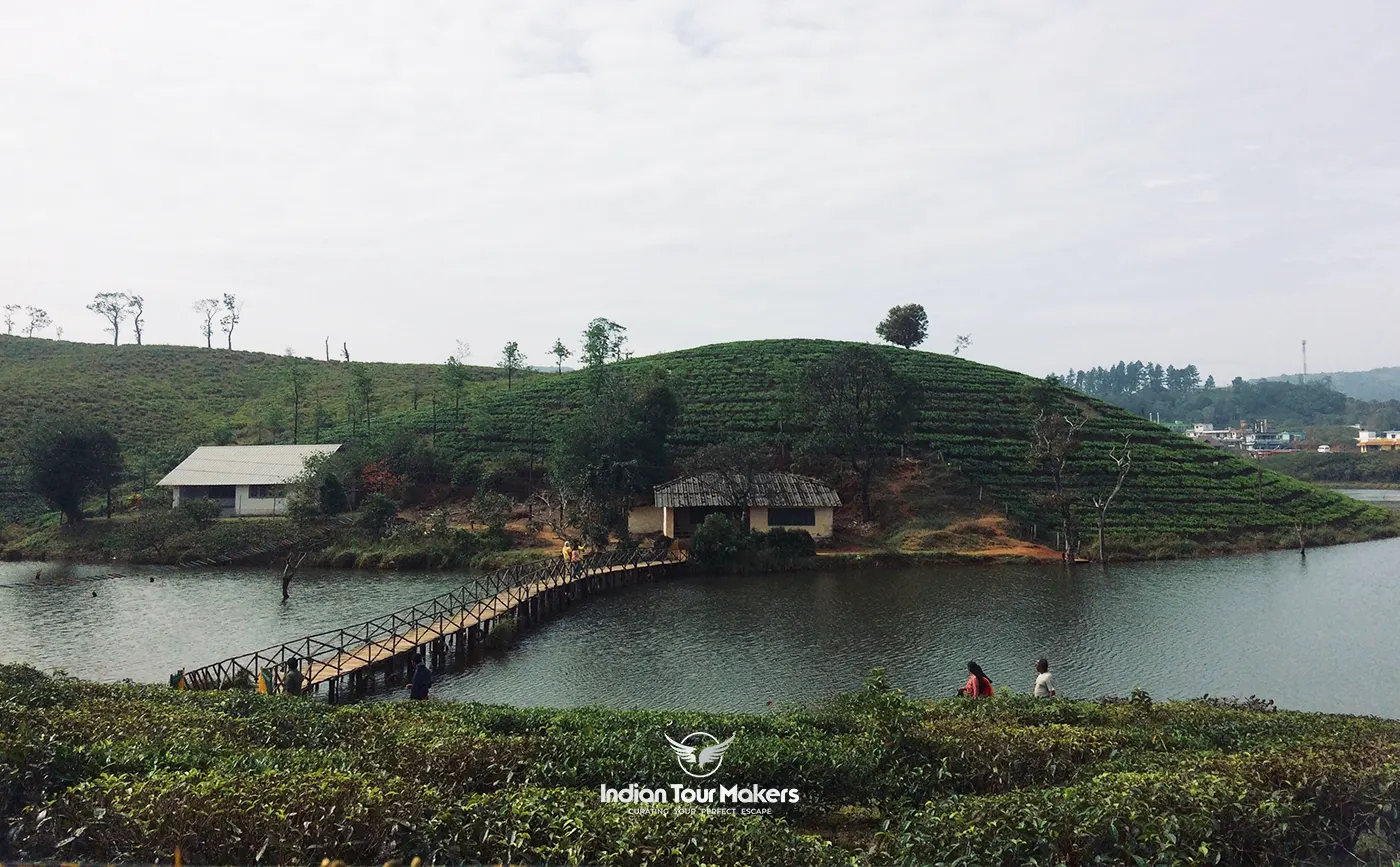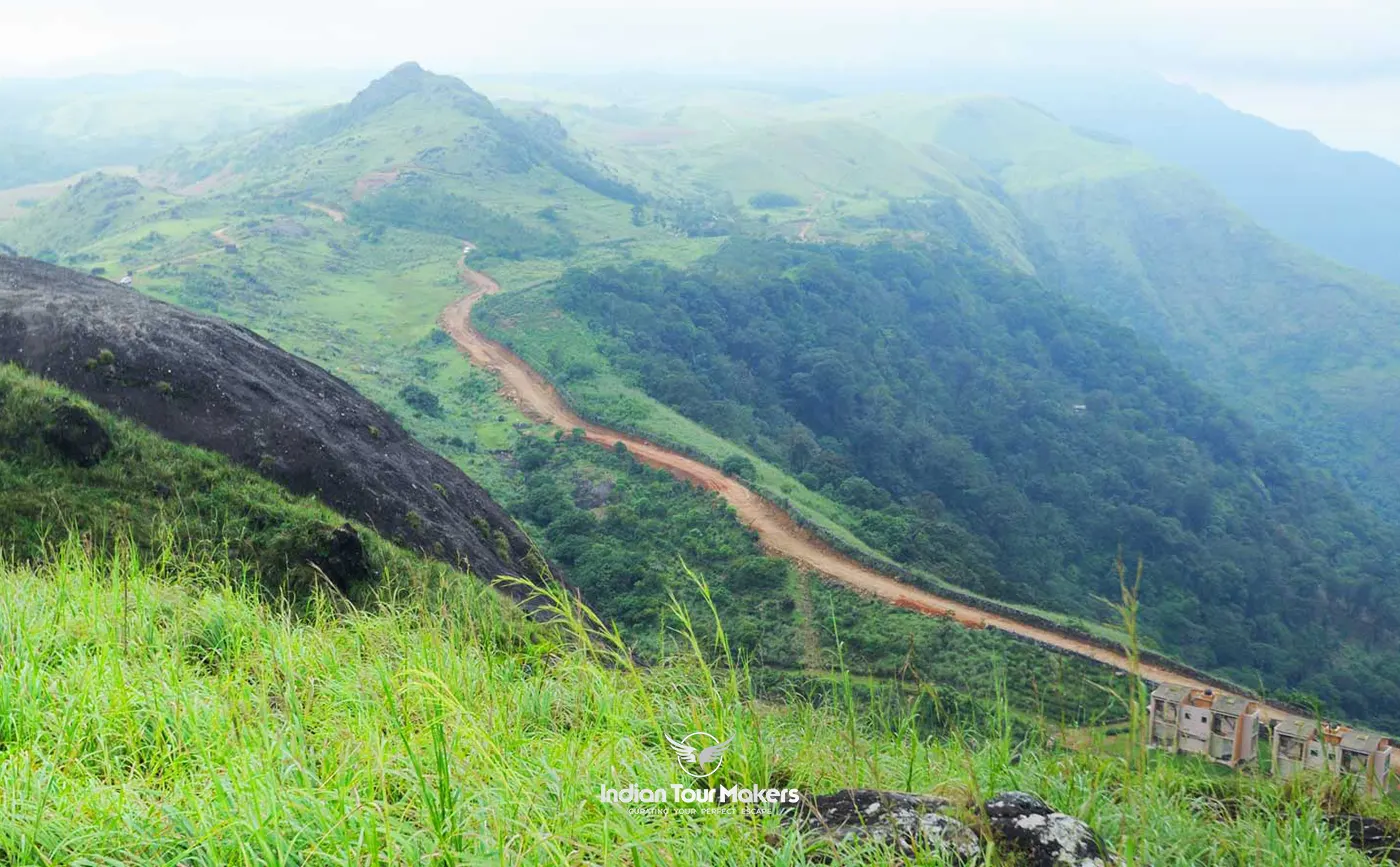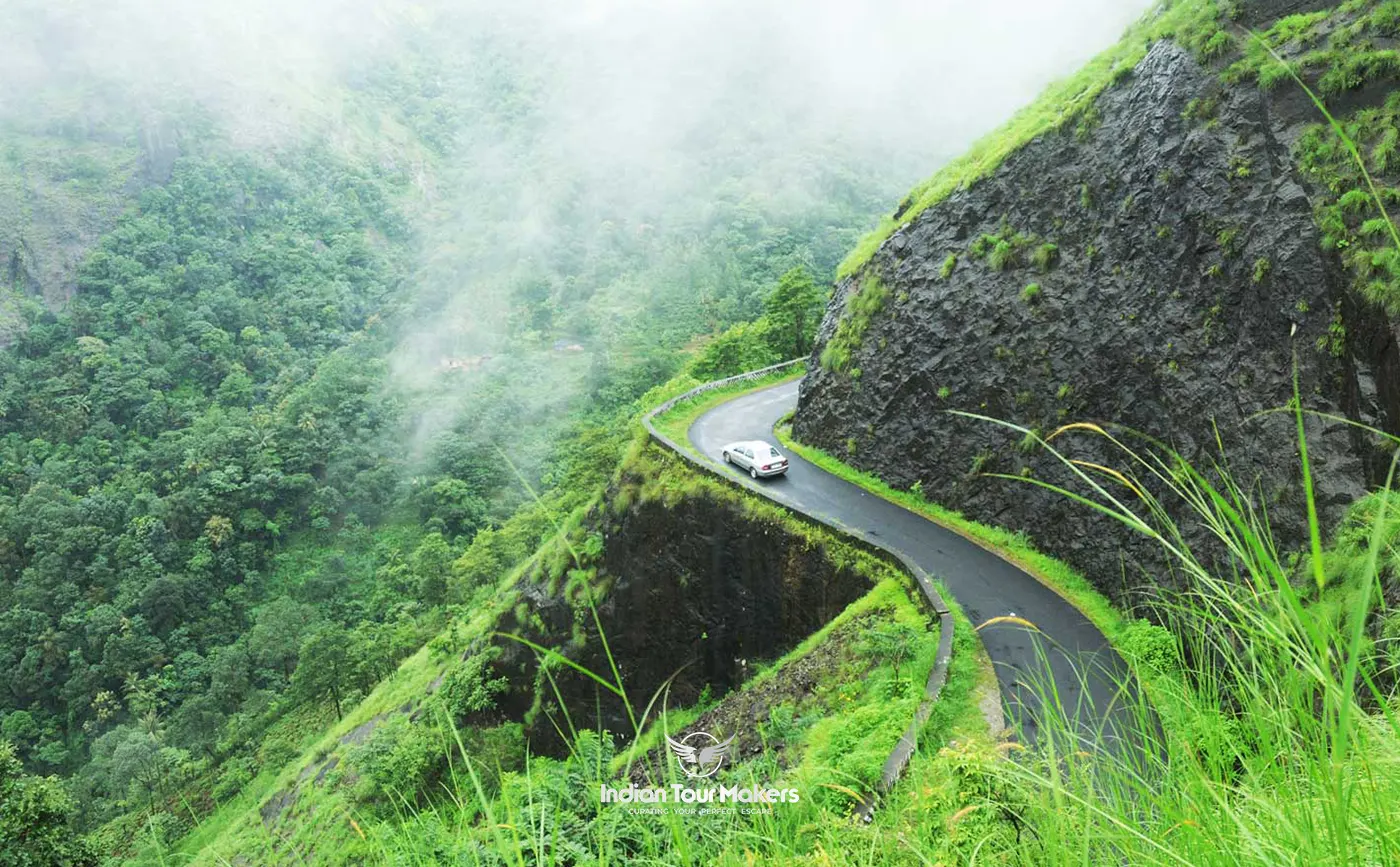




Welcome to Vagamon, Kerala’s secret paradise. Picture this: You’re standing at the edge of a lofty cliff, eyes shut, embracing the crisp, invigorating breeze. Open your eyes and take in the endless rolling green hills, dressed in a thick blanket of tea plantations. Breathe deeply, filling your lungs with the intoxicating scent of fresh pine.
Look around, and you’ll see undulating meadows that go on forever, whispering tales of untouched beauty. Each turn on the winding mountain roads unfolds yet another canvas painted in a million shades of green.
Hear that? That’s the chirping of the many unseen birds, serenading you with their songs. In the distance, you hear the gentle gurgling of a river, inviting you to take a dip in its clear, cool waters.
The simplicity of life in Vagamon captures your heart. People here smile with their eyes, their warmth radiating as they go about their day, immersed in their traditions and customs. The local cuisine is a symphony of spices that fills you with a sense of belonging.
This is Vagamon. This is serenity, wrapped in lush greenery and sprinkled with the magic of the Western Ghats. It’s time you immerse yourself in its splendour. Come, let’s journey into Kerala’s hidden treasure. Vagamon awaits you.
Vagamon: A Walk Through History
Born from the vision of the British, Vagamon was developed into a tea plantation during the early 20th century. The verdant slopes, which today hold thousands of tea shrubs, owe their existence to British planters, spearheaded by Walter Duncan & Company.
In the mid-1920s, Vagamon emerged on the map, enchanting the Brits with its climate and topography, ideal for tea cultivation. For years, the silent hills and the neatly manicured tea gardens kept the town a well-guarded secret from the rest of the world.
The Second World War brought a temporary halt to Vagamon’s growth. But once the dust of war settled, Vagamon picked up its pace, inviting new planters and visitors with its untouched beauty.
Post-Independence, in the 1950s, Vagamon saw an influx of Catholic settlers. The Christian influence became evident with the establishment of the Kurisumala Ashram, a monastery for Christian ascetics who follow the Indian spiritual traditions.
The late 20th century marked the gradual transformation of Vagamon into a popular tourist destination. The pristine beauty of the place, coupled with its pleasant climate, drew in domestic and international tourists alike.
Entering the 21st century, Vagamon continued to retain its charm, showcasing a perfect blend of natural beauty and history. Despite the surge in popularity, it remains a serene escape, devoid of the typical commercial trappings seen in other hill stations.
Today, Vagamon stands as a symbol of Kerala’s heritage, a testament to the state’s rich past. Its unique history, layered with British tea plantations, Christian monastic life, and vibrant local culture, makes it a must-visit destination for anyone exploring the ‘God’s Own Country’.
Location: Nestled in the Idukki district, Vagamon straddles the border of Kottayam and is approximately 1,100 meters above sea level.
Languages Spoken: While Malayalam is the local language, English is widely understood, making communication easy for tourists.
Best Known For: Vagamon is best known for its sprawling tea plantations, mist-covered hills, lush meadows, and serene pine forests. It’s also famous for paragliding activities.
Climate: Vagamon enjoys a cool climate throughout the year. Summers (March to May) are mild, while monsoons (June to September) are heavy. Winters (December to February) are cold but pleasant, with temperatures ranging from 10°C to 25°C.
Popular Festivals: The region celebrates local festivals like Onam and Vishu with fervor. During the Good Friday week, the Kurisumala pilgrimage attracts devotees from all over.
Tourist Attractions: Some must-see attractions are the Vagamon Pine Forest, Thangal Para, Kurisumala, Vagamon Lake, Mundakayam Ghat, and the Marmala Waterfall.
Local Cuisine: Kerala’s diverse culinary traditions can be savored in Vagamon. Dishes like appam with stew, Malabar parotta with Kerala beef curry, and tapioca with spicy fish curry are a must-try. The area also produces delicious, locally-grown tea.
September to March: The post-monsoon period and the cool winter months are generally considered the best time to visit Vagamon. The rain-washed landscapes come alive with lush greenery and the weather remains pleasantly cool.
September to November: This period sees an explosion of greenery in the aftermath of the monsoons. The waterfalls are at their best, making it a delightful experience for nature lovers.
December to February: The winters in Vagamon are cool and comfortable, making it ideal for outdoor activities and sightseeing. The misty mornings and the chilly evenings add to the charm of the hill station.
While Vagamon is a year-round destination, it’s worth noting that the heavy monsoons (June-August) could disrupt travel plans with landslides and road blockages. On the other hand, the lush landscapes post-monsoon offer a visual treat for those who don’t mind a little rain. Always check weather forecasts and plan accordingly.
By Air: The nearest airport to Vagamon is Cochin International Airport, about 94 kilometers away. It is well-connected to major Indian cities and several international destinations. Taxis or cabs can be hired from the airport to reach Vagamon.
By Train: The nearest railway station is Kottayam, around 64 kilometers from Vagamon. Kottayam is well connected with major cities in India. From the railway station, you can hire a taxi or take a bus to reach Vagamon.
By Road: Vagamon is well-connected by road with cities like Kochi, Trivandrum, and Kottayam. State-run as well as private buses operate regular services to Vagamon. Alternatively, you can self-drive or hire a taxi for a more comfortable journey.
By Bus: Kerala State Road Transport Corporation (KSRTC) operates regular bus services to Vagamon from nearby towns like Kottayam, Ernakulam, and Thodupuzha.
Please note that the last few kilometers to reach Vagamon are via hilly terrain, so be prepared for a slightly bumpy, but incredibly scenic ride!

Subscribe to see secret deals prices drop the moment you sign up!

